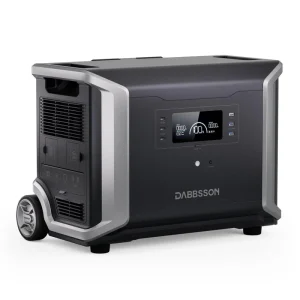Will Power Stations So You Can Fly? Now it is limited, especially with regards to battery size. Passenger airlines typically follow regulations established by the International Air Transport Association (IATA), and as I stated in an earlier article, the general rule is lithium-ion batteries of up to 100 watt-hours (wh) are permitted in checked baggage. Larger power stations of 100-300 Wh are often restricted on airlines and clearance from the airline is required; they also must be kept in a carry-on rather than checked. Passenger flights are generally forbidden from taking units with a watt-hour rating greater than 300 Wh due to potential fire hazards.
Anything much smaller is going to be less convenient for travel or perhaps you might opt for a pocket-size power bank such as this 1000 mAh RAVPower Power Bank. These frequently fit into carry-on luggage and no special permissions are needed. But models such as the 2000-whatt power station Dabbsson DBS2300 just go with it, because of their high capacity they are among other things safe. This size is better suited to car or RV travel as there are no restrictions on battery size.

When shipping through the airlines, terminals must be protected from being short-circuited so usually power station have to be packed in a protective case. Secondly, you may have heard about not being allowed to take spare batteries and carry-ons onto airplanes (usually yes, unless each battery separately meets the Wh limit set by the airline). Another measure stipulated in a recent TSA advisory is that lithium-ion batteries must have capacity clearly labeled on them, as this purportedly makes it easier for airport security to determine if the products are safe to fly without holding up lines.
Travellers stood to fly with a power station would need to plan ahead and review their individual airline restrictions, as policy may vary. Airlines may allow up to 160 Wh units to fly without pre-approval travel, while others keep the hard-and-fast 100Wh for both carry-on and checked baggage. For anyone requiring high capacity, charging options can be a prudent solution, but for those who cannot get by otherwise, a good alternative is to rent an appropriate power station at the destination.
Depending on your demands for power, it could be smarter to invest in a couple of smaller-capacity power banks instead of one big, expensive power station. Over the last few years, a few companies have come up with space-saving power banks just to address this issue but those were of less than 100 Wh and could hence efficiently power small gadgets and other portable electronics.